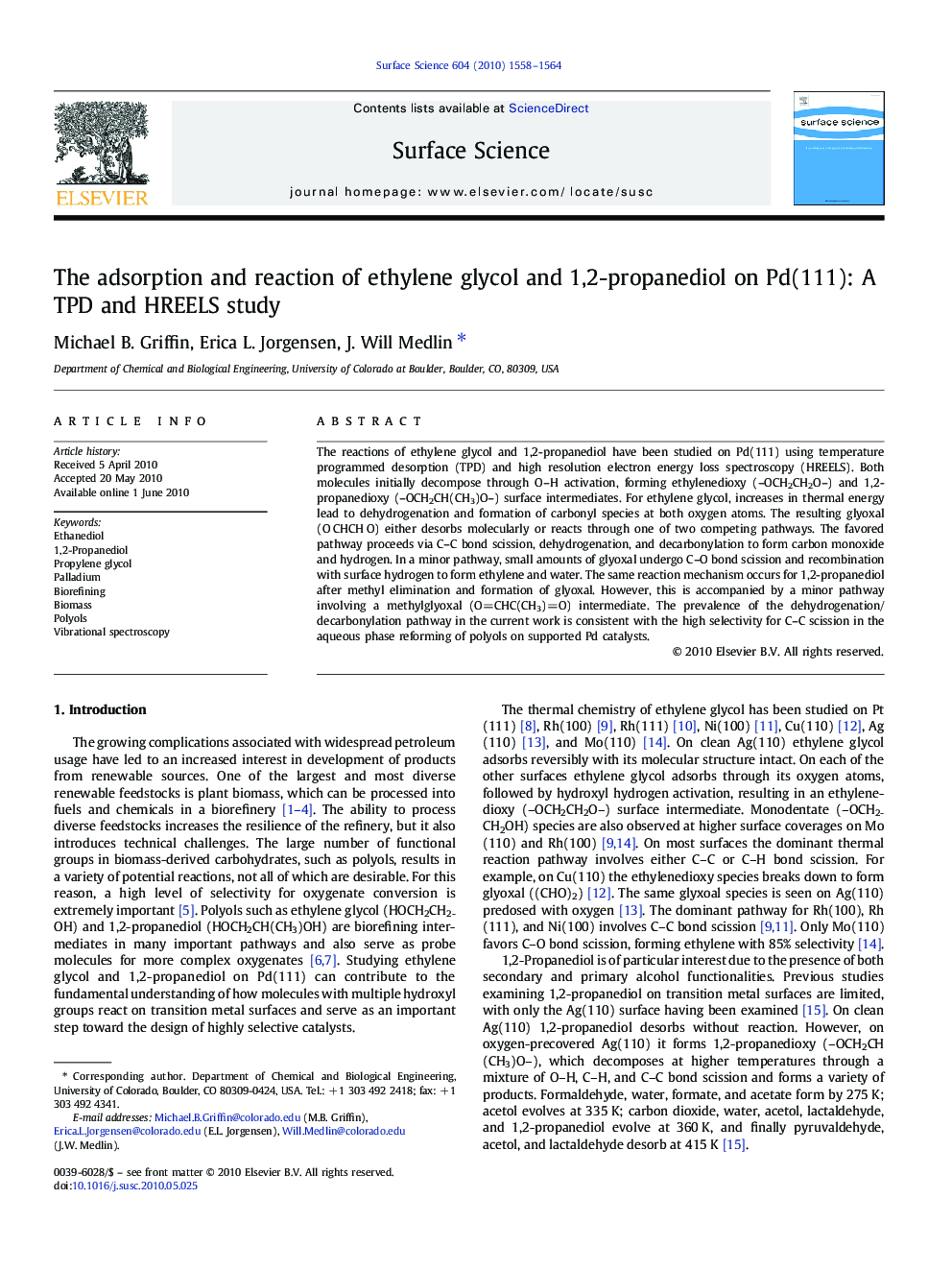| Article ID | Journal | Published Year | Pages | File Type |
|---|---|---|---|---|
| 5423690 | Surface Science | 2010 | 7 Pages |
Abstract
The reactions of ethylene glycol and 1,2-propanediol have been studied on Pd(111) using temperature programmed desorption (TPD) and high resolution electron energy loss spectroscopy (HREELS). Both molecules initially decompose through O-H activation, forming ethylenedioxy (-OCH2CH2O-) and 1,2-propanedioxy (-OCH2CH(CH3)O-) surface intermediates. For ethylene glycol, increases in thermal energy lead to dehydrogenation and formation of carbonyl species at both oxygen atoms. The resulting glyoxal (OâCHCHâO) either desorbs molecularly or reacts through one of two competing pathways. The favored pathway proceeds via C-C bond scission, dehydrogenation, and decarbonylation to form carbon monoxide and hydrogen. In a minor pathway, small amounts of glyoxal undergo C-O bond scission and recombination with surface hydrogen to form ethylene and water. The same reaction mechanism occurs for 1,2-propanediol after methyl elimination and formation of glyoxal. However, this is accompanied by a minor pathway involving a methylglyoxal (O=CHC(CH3)=O) intermediate. The prevalence of the dehydrogenation/decarbonylation pathway in the current work is consistent with the high selectivity for C-C scission in the aqueous phase reforming of polyols on supported Pd catalysts.
Keywords
Related Topics
Physical Sciences and Engineering
Chemistry
Physical and Theoretical Chemistry
Authors
Michael B. Griffin, Erica L. Jorgensen, J. Will Medlin,
